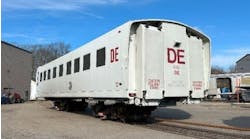A number of transit agencies are finding that adding train capacity is a major obstacle and that building additional track, updating signal systems or extending passenger platforms are not financially feasible or operationally practical. Rather than rely solely on an infrastructure-based solution, additional capacity can also be achieved by implementing a CBTC system.
A Communications-Based Train Control (CBTC) system is defined by the IEEE as “a continuous, automatic train control system utilizing high-resolution train location determination, independent of track circuits; continuous, high-capacity, bidirectional train-to-wayside data communications; and trainborne and wayside processors capable of implementing automatic train protection (ATP) functions, as well as optional automatic train operation (ATO) and automatic train supervision (ATS) functions” (IEEE Standard 1474.1-1999). More simply put, CBTC is a railroad signaling system that uses radiofrequency communications between each train, as well as trackside equipment, to control and safely manage train traffic. CBTC was developed to provide transit systems with additional passenger capacity by allowing trains to be run with shorter time intervals (headways) between trains. Shorter headways permit more trains on the same section of track which increases passenger throughput.
To provide safe train movement, traditional railroad signaling systems divide track up into a series of fixed length “blocks”. Blocks are actually sections of track which are individually monitored for the presence of a train by detecting if an electrical short-circuit exists between the track rails. If a short circuit is detected, it is assumed that the axles and wheels of a train have spanned the parallel rails causing the short and a train is assumed to be within the block. Trackside equipment in traditional signaling systems monitor the occupancy status of blocks and the position of track switches to determine how far each train may travel and in some cases, how fast. This information is transmitted to the train drivers via trackside signals and other means.
Train throughput, and consequently a system’s capacity to move people, is limited largely by the length of the track blocks. Blocks are typically sized to be long enough to allow the heaviest or fastest trains to safely stop without encroaching on another train or track switch. Careful design of block spacing is required for efficient system operations, and typically results in trading system throughput for safety. For example, if blocks are short, train speeds have to be reduced; if blocks are lengthened, trains become more spread out along the line and passenger capacity is reduced. In addition, the equipment to monitor block occupancy is expensive to install and labor intensive to maintain.
A CBTC system does away with the traditional one-size-fits-all “physical” blocks. In a CBTC system, each train continuously communicates its exact position to the trackside equipment with one foot accuracy. The trackside equipment monitors the location of all trains, the alignment of track switches and other devices, and informs each train of how far it may proceed along the line. Typically a train’s permitted travel limit is either the rear of the next train ahead or a track switch not aligned as necessary for the approaching train. Each train is responsible for ensuring that it does not exceed the travel limit permitted by the trackside equipment in accordance with that particular train’s actual operating characteristics — its length, weight, braking ability, and velocity.
A CBTC system increases overall system performance by allowing trains to run closer together. This is accomplished by enabling each train to control its movements within a track area envelope provided by the trackside CBTC equipment. The compromises required by a one-size-fits-all traditional signaling block design are eliminated by a CBTC-equipped train determining its own individual stopping requirements based on the actual train’s capabilities.
The first CBTC systems were opened in 2003 in San Francisco and Singapore. Since then, several dozen CBTC systems have been built worldwide. CBTC systems in North America include airport people mover systems, several light rail lines, the New York City Subway Canarsie Line, and SEPTA’s Green Line Tunnel.



